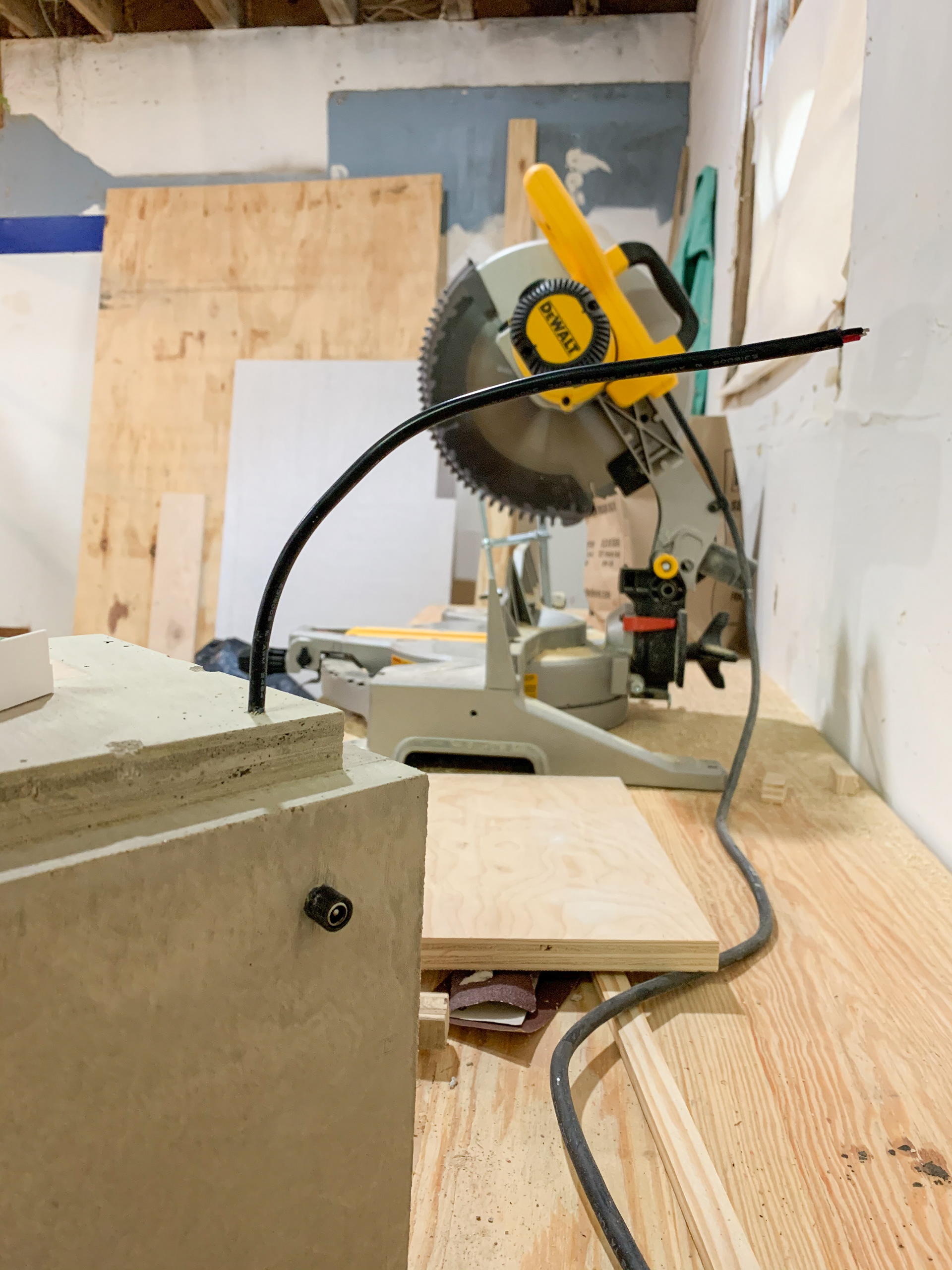This project is a multimedia sculpture meant to contain, bounce, and carefully diffuse light. Inspired by the Cenotaph to Newton as well as its predecessor, the Lumen 1, this is the second installment in a series of light studies. The idea is to create a shell which is dark and light-absorbative on the outside, but bright and light-reflective on the inside. The carve is then made into the shell, revealing a shimmering, but narrow glimpse into the mesmerizing contents within, much like one might crack a geode.
A control dial is installed in the back of the sculpture, allowing the color and brightness to be altered to anything within the RGB spectrum. Standing 6' tall, this piece is meant to act as a character in the room, respondent to any mood that the user wishes to set.
Click on the images below to read how this sculpture came together, step-by-step.
A scrappy concept image for the sculpture design. Note: the initial design was 6"x6" in plan. This was bumped up to 8"x8" to give the light more room to diffuse.

Initial mold is made of Birch Plywood.

The mold houses the power input, to give the final form a clean appearance.

The top of the concrete form is extruded to receive the plywood tower.

The power input barely has any presence.

The motherboard for the LEDs is housed inside the sculpture.

The plywood tower uses mitered edges for a clean appearance.

By carefully working each corner, the tower lines up perfectly with the concrete base.

Two holes are cut in the back of the tower to receive the controller and an access door for the motherboard.

The controller allows the brightness and color to be easily adjusted.

The acrylic double-channel was first carefully drawn in AutoCAD and then laser cut.

Assembled acrylic double-channel.

A gap is left between the inner channel brackets at every 18" to give an intentional metering to the light pattern.

The 45 degree angle of the double-channel meets the mitered plywood pieces to form the front of the sculpture.

A quick test run to make sure that the light filters through the channel in a satisfactory manner.

All major components are glued and pin-nailed in place.
Hue/Brightness Demo







